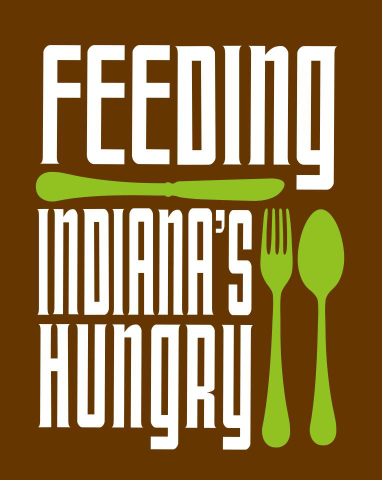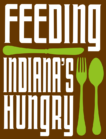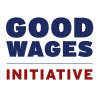Hunger In Indiana
Face Of Hunger In Indiana Revealed By New Feeding America Report
![]() Largest, Most Comprehensive Analysis of Charitable Food Assistance in America Reports at least 1.1 Million Hoosiers Served Annually
Largest, Most Comprehensive Analysis of Charitable Food Assistance in America Reports at least 1.1 Million Hoosiers Served Annually
A new study by Feeding Indiana’s Hungry and Feeding America shows that 1 in 6 people, or an estimated 1.1 million people, in Indiana turn to food pantries and meal service programs to feed themselves and their families. Of the households served by Indiana’s food banks and programs, 43 percent include a child under 18 and 25 percent contain a senior aged 60 or over.
Nationally, Hunger in America 2014 found that more than 46.5 million people turn to agencies and programs of the Feeding America network of food banks every year. Feeding Indiana’s Hungry is a Partner State Association of Feeding America, and all eleven member food banks are Feeding America members.
The study documents household demographics and offers a snapshot of the people served by food banks in Indiana – their circumstances, the challenges they face and the choices they are forced to make living on extremely limited household incomes. It is also the first nationally-representative study that assesses the prevalence of past and current members of the U.S. Military* and adult students receiving charitable food assistance.
“The results of this study show us that the face of hunger is one we would recognize in every Hoosier community,” said Emily Weikert Bryant, Executive Director of Feeding Indiana’s Hungry. “Many of our neighbors who are seeking food assistance have jobs, raise families, work toward education and struggle with health problems, like all of us. Too often, our clients also have to make difficult decisions to get enough food for their families. Knowing that hunger is something no Hoosier should face, it is important to remember the critical work food banks do every day, and how much more we can do together to solve hunger across Indiana.”
“The Hunger in America 2014 findings demonstrate the urgent need for all of us to address hunger in our communities,” said Bob Aiken, CEO of Feeding America. “This data provides a factual basis for decisions about how we as a nation approach hunger relief and protect our most vulnerable citizens.”
Key statistics from the report include:
WIDESPREAD USE OF FOOD ASSISTANCE
- Indiana’s food banks serve at least 1.1 million people annually, 33 percent of whom are children and 13 percent seniors.
- Among all clients, 18 percent are black, 4 percent are Latino, and 71 percent are white.
- 9 percent of adult clients are students.
- 22 percent of households include someone who is a veteran or who has ever served in the military.
- 69 percent of affiliated charitable agencies employ no paid staff/are operated exclusively by volunteers.
CLIENTS STRUGGLING WITH HEALTH ISSUES
- 85 percent of households report purchasing inexpensive, unhealthy food because they could not afford healthier options.
- 77 percent of households report having to choose between paying for food and paying for medicine or medical care.
- 34 percent of households include a member with diabetes.
- 64 percent households have a member with high blood pressure.
MAKING TOUGH CHOICES AND TRADE-OFFS TO KEEP FOOD ON THE TABLE
Following are the choices client households reported making in the past 12 months:
- 77 percent report choosing between paying for food and paying for utilities.
- 39 percent of these households are making the choice every month.
- 78 percent report making choices between paying for food and paying for transportation.
- 44 percent of these households are making the choice every month.
- 77 percent report choosing between paying for food and paying for medicine/medical care.
- 45 percent of these households are making the choice every month.
- 63 percent report choosing between paying for food and paying for housing.
- 31 percent of these households are making the choice every month.
- 40 percent report choosing between paying for food and paying for education expenses.
- 19 percent are making the choice every month.
60 percent of households reported using three or more coping strategies for getting enough food in the past 12 months. The frequency of these strategies among all households include:
- 62 percent report eating food past the expiration date;
- 24 percent report growing food in a garden;
- 43 percent report pawning or selling personal property;
- 85 percent report purchasing inexpensive, unhealthy food;
- 35 percent report watering down food or drinks;
- 62 percent report receiving help from friends or family.
LOW WAGES, UNDEREMPLOYMENT AND UNEMPLOYMENT DRIVING NEED
- 21 percent of respondents have faced foreclosure or eviction in the past five years.
- Among all households served by Indiana agencies and programs, 61 percent have at least one member who has been employed in the past year.
- Among all households with an employed person, the person with the longest employment duration is more likely to be employed full-time (59 percent) than part-time (41 percent). In comparison, the national average shows the person with the longest employment duration to be part-time (57 percent) rather than full-time (43 percent).
Hunger in America 2014 was conducted using rigorous academic research standards and was peer reviewed by a technical advisory team including researchers from American University, University of Illinois at Champaign-Urbana and the Urban Institute. Nationally, confidential responses were collected on electronic tablets by 6,000 trained volunteer data collectors.
The study was funded nationally by The Howard G. Buffett Foundation and locally in part by Kroger.
Click to read the full report for Hunger in America 2014: Indiana.
Help Fight Hunger
Learn More
Contacts
PLEASE NOTE: This is NOT a food pantry location nor food distribution site. Call 211 for immediate assistance with food resource needs.
- 8425 Keystone Crossing Suite 220A Indianapolis, Indiana 46240
- (317) 396-9355 (office)
News & Updates
- Feeding America study shows that child food insecurity affects every county in the United States, with rates as high as 50%Child food insecurity affects every […]
- Feeding Indiana’s Hungry Releases new Hunger in Indiana 2024 StudyToday, Feeding Indiana’s Hungry […]



